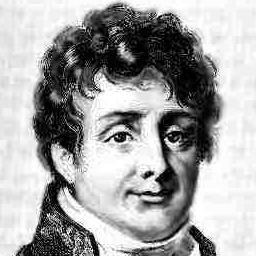
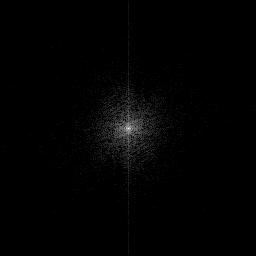
 |
 |
| Fourier (1768 - 1830) | Fourier's transform |
 |
 |
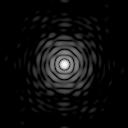 |
Files used in this study may be downloaded from: happyface.zip.
| image | description | source code |
 |
Start with a simple piece of artwork (55 x 55).smile = imread('smile.tif'); |
smile.tif |
 |
Embed it in a 64 x 64 array.smile1 = fftprep(smile); |
fftprep.m |
Reduce the size to keep our images small (optional).smile2 = reduce(smile1); |
reduce.m | |
 |
Embed this image in a 128 x 128 array (larger size optional).smile_embed = fftprep(smile2,128); |
fftprep.m |
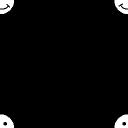 |
Remap the origin to the upper left cornersmile_embed = fftshift(smile_embed); |
fftshift.m |
| complex-valued image |
Run the Fourier transform program.smile_fft = fft2(smile_embed); |
fft2.m |
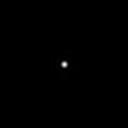 |
Construct the square modulus = (real*real+imag*imag), scale the results to a maximum value of unity, and remap the origin back to the center of the image.
sqmod = smile_fft.*conj(smile_fft); |
|
 |
Use logarithmic enhancement to see details. The default stretches 4 decades of values. out = logim(sqmod); |
logim.m |
Before applying the Fourier Transform to general images, we really should apply it to a case for which we know the answer.
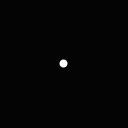 |
 |
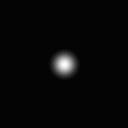 |
The input image is a circular disk with a radius of 4 pixels centered in a 128 x 128 array. The output image is the square modulus of the resulting Fourier transform. A cross-section of the output image is shown below.
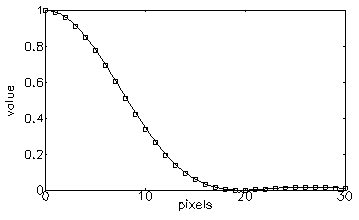
The marked data points are taken from a horizontal cross-section
of the output image. The solid curve is the ideal function, which
was generated from somb(r/16).^2 (source code: somb.m). The factor of 16 converts pixel
distance to the appropriate normalized distance.
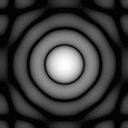 |
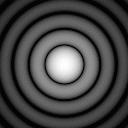 |
| FFT | ideal result |
The image on the left is a logarithmic transformation of the output image, and shows the Airy rings. Note the departure from circular symmetry at the outskirts of the image. These artifacts are due to sampling the input function onto a rectangular grid. The artefacts are exaggerated by the logarithmic transformation.
The image on the right was generated from the ideal analytic
function somb(r/16).^2 and demonstrates the correct
visual appearance.
Maintained by John Loomis, last updated 8 March 2000